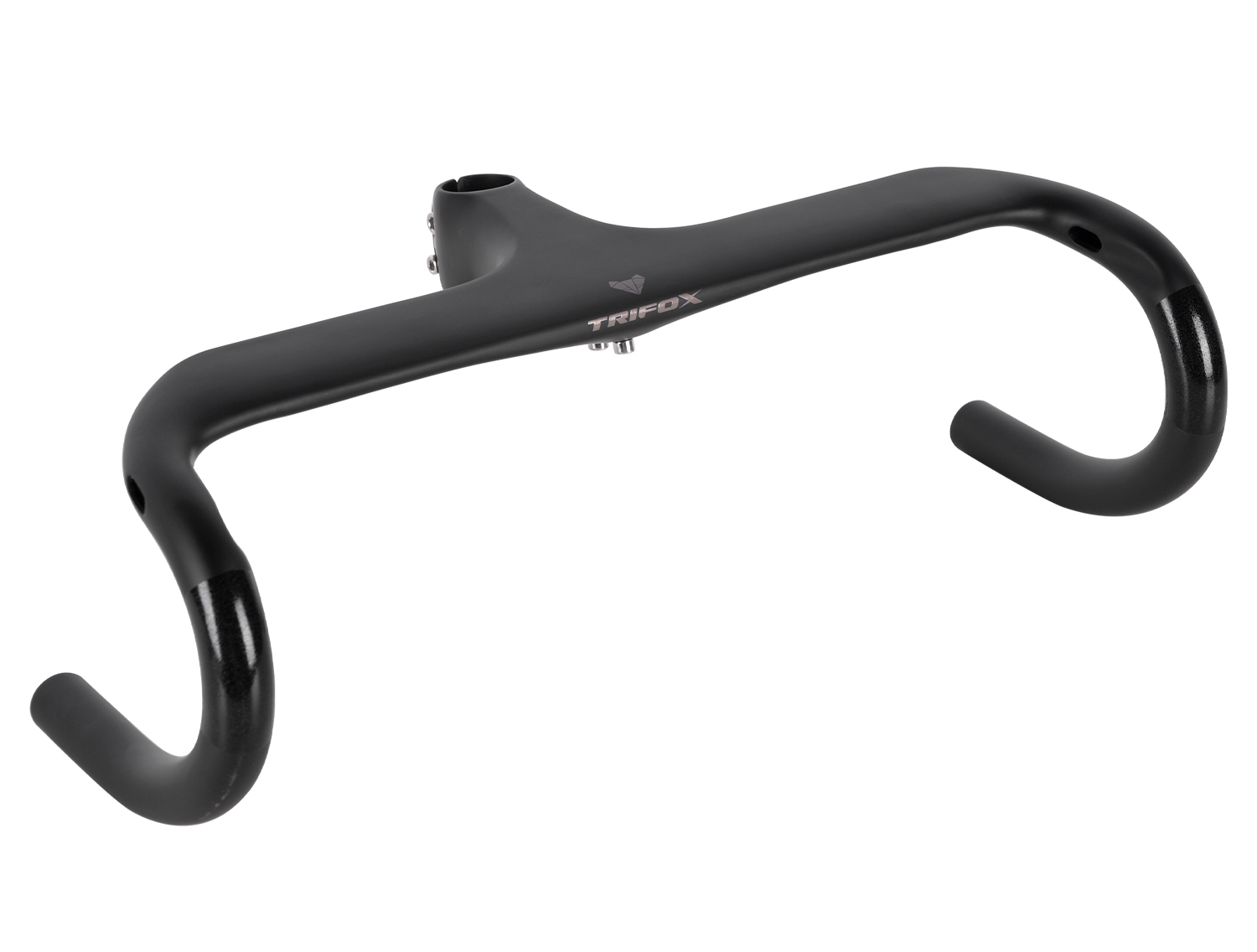
For many cyclists, the handlebars are a crucial component that can significantly affect comfort, control, and performance. When it comes to upgrading your bike, one of the best investments you can make is switching to carbon drop bars. While traditional aluminum bars have been the standard for years, carbon drop bars have quickly gained popularity for their impressive benefits. Whether you're a seasoned road cyclist or a weekend rider looking for an upgrade, carbon drop bars can provide advantages that are hard to ignore. Here’s why you should consider making the switch. 1. Lightweight Design for Enhanced Performance One of the primary reasons to switch to carbon drop bars is their lightweight nature. Carbon fiber is known for being incredibly strong yet light, which means you can reduce the overall weight of your bike without compromising on durability. In cycling, every gram counts, especially when you’re climbing hills, sprinting, or racing. By switching to carbon drop bars, you’ll enjoy quicker acceleration and improved maneuverability. For road cyclists, the weight reduction can make a significant difference in long-distance rides or during climbs, where even a small decrease in bike weight can lead to better performance. Carbon drop bars are ideal for those looking to maximize every ounce of effort and push their limits on the road. 2. Increased Comfort with Vibration Damping One of the standout features of carbon drop bars is their ability to dampen vibrations. On long rides, especially on rough or uneven roads, the constant vibrations from the handlebars can lead to fatigue, discomfort, and even numbness in your hands. Carbon fiber, by its nature, absorbs road vibrations much better than aluminum or steel. By reducing the vibrations transmitted through the handlebars, carbon drop bars allow you to ride longer without experiencing discomfort. This is particularly beneficial for cyclists who enjoy endurance rides or those who spend a lot of time on mixed surfaces. With carbon drop bars, you’ll feel less strain on your wrists and shoulders, enabling you to maintain a more comfortable riding position for extended periods. 3. Improved Stiffness and Control While carbon drop bars are lightweight, they don’t sacrifice stiffness. In fact, they offer superior stiffness compared to aluminum bars. This stiffness translates to improved power transfer when you’re riding hard or sprinting. When you apply pressure to the handlebars, a stiffer bar ensures that the energy you generate is transferred directly to the wheels rather than being absorbed by flexing in the handlebars. This leads to a more responsive and efficient ride. Additionally, the improved stiffness of carbon bars offers better control, especially during high-speed descents or in technical corners. The enhanced feedback from the road makes it easier to maintain stability and handle your bike with precision. 4. Aerodynamic Advantage Another reason to consider carbon drop bars is their aerodynamic design. Carbon fiber allows for more intricate shaping, making it possible to create handlebars that reduce wind resistance. Many carbon drop bars are designed with an aerodynamic profile, which can help you maintain higher speeds with less effort. This is particularly useful for time trials, road racing, or cyclists looking to maximize their performance on fast, flat sections of a ride. In addition to their aerodynamic shape, carbon drop bars often come with a variety of ergonomic features that enhance comfort and performance, such as ergonomic bends and positions that reduce strain on your wrists and arms. 5. Durability and Longevity Carbon drop bars are incredibly durable and resistant to corrosion, making them an excellent long-term investment for your bike. Unlike metal handlebars, which may corrode over time, carbon bars can withstand the elements much better, especially in wet or humid conditions. Carbon’s ability to handle repeated impacts and resist wear and tear ensures that your drop bars will last much longer than aluminum bars. Moreover, carbon fiber is less prone to bending or cracking under stress compared to aluminum, which means you can ride with confidence, knowing your handlebars will hold up in tough conditions. This durability, combined with the lightweight and comfort benefits, makes carbon drop bars a wise choice for any serious cyclist. 6. Customization and Versatility Carbon drop bars are available in a variety of shapes, sizes, and designs to suit different types of cycling. Whether you're a road cyclist, gravel rider, or a cyclist who participates in triathlons, there’s a carbon bar designed specifically for your needs. Many carbon bars feature ergonomic shapes and different hand positions that improve comfort and reduce fatigue, making them suitable for long-distance rides and races. Additionally, carbon bars often offer greater flexibility in terms of setup, with some models allowing you to adjust the width, drop, and reach of the handlebars to achieve the perfect fit. This customization ensures that you’re riding in a position that enhances both comfort and performance. Switching to carbon drop bars is a game-changer for cyclists looking to improve their ride. The combination of lightweight design, enhanced comfort through vibration damping, increased stiffness for better power transfer, and the added aerodynamic advantages makes carbon drop bars a must-have for serious cyclists. Whether you're racing, touring, or simply riding for pleasure, upgrading to carbon drop bars can help elevate your performance and riding experience. If you're ready to take your cycling to the next level, consider making the switch to carbon drop bars. Not only will you notice the difference in comfort and control, but you’ll also be investing in a long-lasting, high-performance upgrade that will enhance your cycling for years to come.
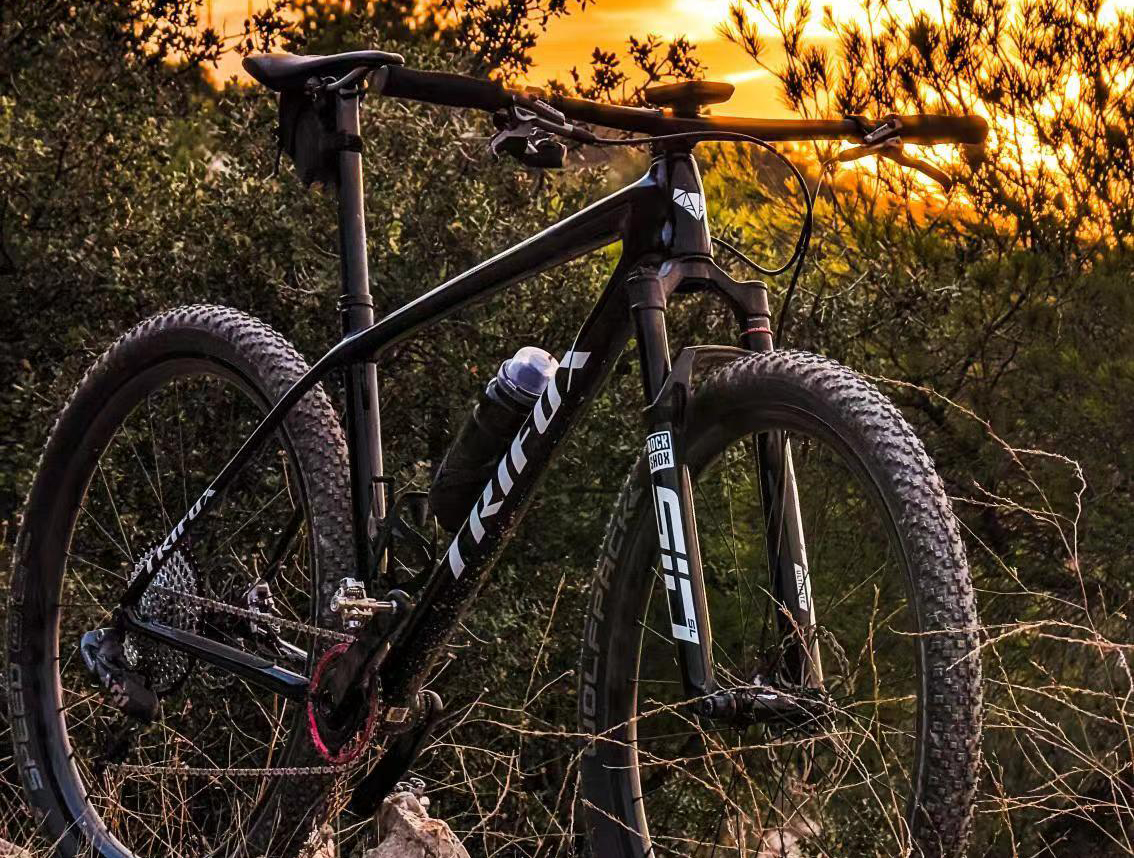
In the world of cycling, performance and weight are always at the forefront of a cyclist’s mind. Whether you're an avid racer or a weekend rider, the quest for a faster, smoother, and lighter ride never ends. Among the innovations that have revolutionized the sport, carbon bike frames have emerged as one of the most significant advancements in lightweight cycling. Known for their superior strength, reduced weight, and enhanced riding experience, carbon frames are becoming the go-to choice for riders across all disciplines. In this blog post, we’ll explore why carbon frames are the future of lightweight cycling and why they may be the perfect choice for your next bike upgrade. 1. Incredible Strength-to-Weight Ratio One of the primary reasons cyclists turn to carbon frames is their unmatched strength-to-weight ratio. Carbon fiber is incredibly strong yet extremely lightweight, making it the ideal material for bike frames. In fact, carbon frames are often much lighter than their aluminum and steel counterparts without sacrificing durability or performance. This is especially important for competitive cyclists, where every gram saved can translate into faster speeds and improved race times. The lightweight nature of carbon frames makes climbing hills and accelerating on flat terrain significantly easier. Whether you’re racing up steep inclines or pushing the limits on a time trial, a carbon frame provides the responsiveness and agility needed to optimize your cycling performance. The lighter weight of the bike means less energy is required to propel it forward, allowing for more efficient cycling overall. 2.Superior Stiffness and Power Transfer Another compelling reason to choose carbon frames is the stiffness they offer, which results in enhanced power transfer. When you pedal, the energy you generate needs to be efficiently transferred through the frame to the wheels. Carbon frames excel at this by offering a stiffness that allows for optimal power transfer, meaning more of your effort goes directly into speed, rather than being absorbed by the frame. This feature is particularly important for road racers and cyclists who demand the highest levels of efficiency from their bikes. Carbon frames can be engineered to deliver stiffness where it’s needed most, such as in the bottom bracket area (where the pedals attach), while still providing enough flexibility in other parts of the frame to absorb vibrations from the road. This balance between stiffness and comfort is one of the reasons carbon frames are so highly regarded in competitive cycling. 3. Customization for Specific Riding Needs Carbon fiber is highly customizable, allowing manufacturers to design frames that cater to a wide variety of cycling disciplines. Whether you're looking for a frame that prioritizes aerodynamics for road cycling or one that offers shock absorption for mountain biking, carbon can be molded to meet specific needs. Trifox, for example, offers a range of carbon bike frames that are designed for various types of cycling, from lightweight road frames to more durable mountain bike frames. The ability to fine-tune the composition and structure of the frame ensures that carbon frames can meet the demands of any rider, no matter their discipline or riding style. This level of customization makes carbon frames the perfect choice for cyclists who are serious about performance. 4. Vibration Damping for a Smoother Ride A key advantage of carbon frames is their ability to dampen road vibrations. Unlike aluminum or steel, which can transmit vibrations directly through the frame to the rider, carbon fiber naturally absorbs and dissipates these shocks. This leads to a smoother, more comfortable ride, especially on rough or uneven surfaces. For long-distance cyclists, this means less fatigue and more comfort over time, while for racers, it can lead to a more controlled ride at high speeds. Carbon’s ability to reduce road buzz allows cyclists to focus on their performance without being distracted or uncomfortable due to vibrations. 5. Durability and Longevity While carbon frames are lightweight and thin, they are also incredibly durable. Modern carbon frames are designed with multiple layers of carbon fiber, arranged in a way that makes them resistant to cracking and damage. They can withstand impacts better than one might expect from such a light material, and advancements in carbon technology continue to improve their resilience and lifespan. Carbon frames are also more resistant to corrosion than metal frames, which means they can last for many years with proper care and maintenance. This longevity makes carbon frames a good long-term investment for serious cyclists who want to get the most out of their bike. In the world of cycling, where every advantage counts, carbon frames stand out as the future of lightweight cycling. Their combination of strength, lightweight construction, stiffness, vibration damping, and durability makes them the ideal choice for cyclists who want to maximize performance and comfort. Whether you're looking to shave off those extra grams in a race or simply want a bike that offers the best in speed and handling, a carbon frame is an investment that can take your cycling experience to the next level. As technology continues to evolve, carbon frames will only become more refined, offering even greater performance benefits. If you're serious about cycling, it’s clear that carbon frames are the future—and they might just be the perfect upgrade for your next bike.
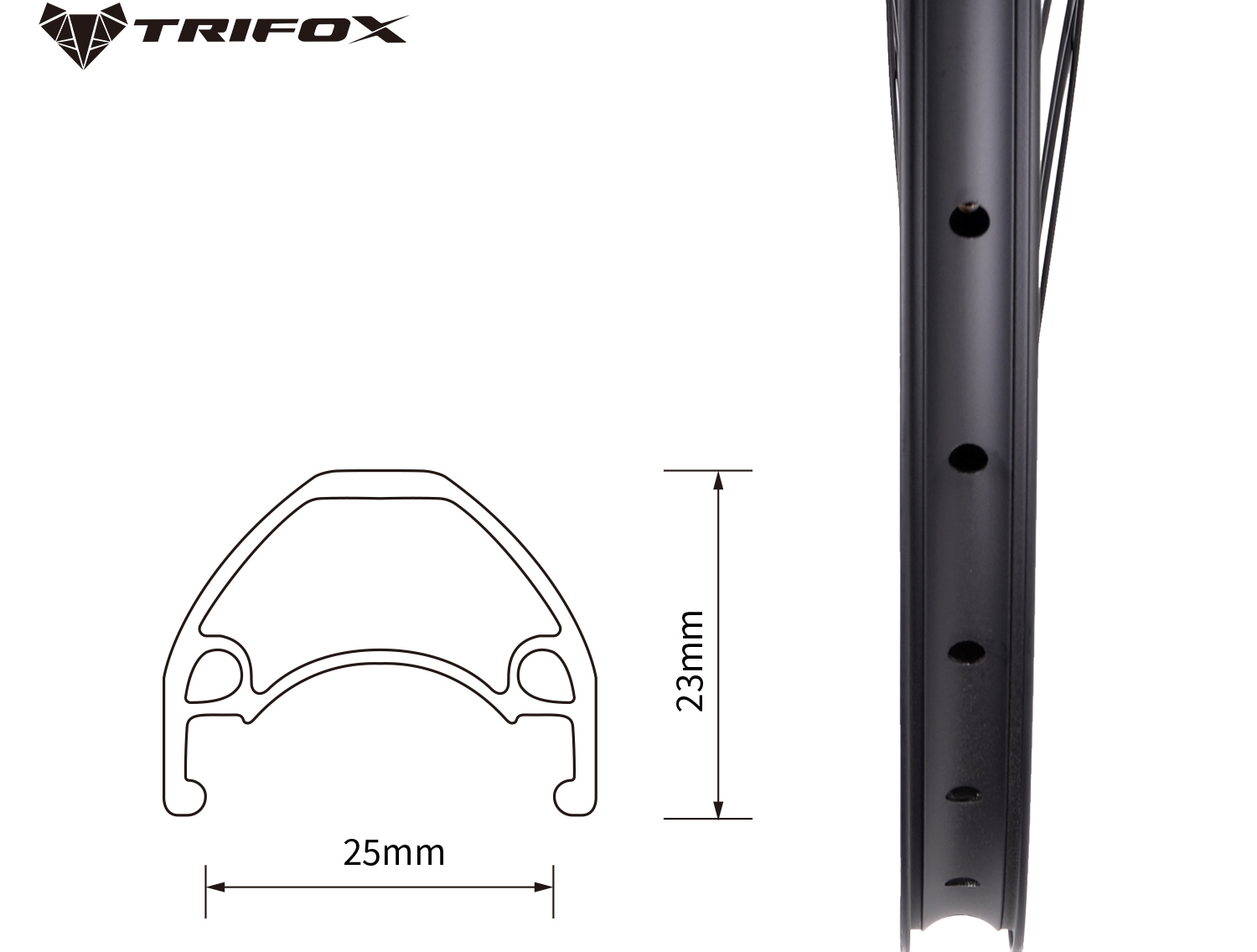
When it comes to upgrading your bicycle, few components make as significant an impact as your wheels. Among the most popular options, alloy series wheels have become a go-to choice for cyclists seeking a balance of performance, durability, and value. Whether you're an amateur rider, a seasoned racer, or someone who enjoys long rides on varied terrains, alloy wheels can elevate your cycling experience. 1. Durability and Strength One of the main reasons cyclists opt for alloy wheels is their impressive durability. Alloy wheels are made from a blend of metals such as aluminum, which is known for its strength-to-weight ratio. These wheels are designed to withstand the wear and tear of regular riding, from the bumps of rough terrain to the pressure of high-speed rides. Compared to traditional steel wheels, alloy wheels are significantly lighter and more resistant to corrosion, meaning they'll last longer and maintain their integrity even in harsh conditions. Whether you’re riding on rugged mountain trails or navigating urban streets, alloy wheels provide the strength you need without adding excessive weight to your bike. This durability makes them ideal for riders who want reliable performance without constantly worrying about replacing or repairing their wheels. 2. Lightweight for Better Performance Weight is a critical factor when it comes to cycling performance. Alloy wheels are lighter than their steel counterparts, which translates into a better ride quality. When your wheels weigh less, it takes less energy to accelerate and maintain speed, improving your overall efficiency. This is particularly noticeable in competitive cycling, where every ounce counts. The reduced weight also enhances maneuverability, allowing you to navigate corners and obstacles with ease. Cyclists who participate in road cycling, mountain biking, or triathlons can greatly benefit from alloy wheels’ lightweight properties. They help improve both speed and handling, contributing to a smoother and faster ride. 3. Affordability Without Sacrificing Quality Another major benefit of alloy series wheels is the affordability they offer. While high-end carbon fiber wheels can provide excellent performance, they often come with a hefty price tag. Alloy wheels, on the other hand, deliver comparable benefits in terms of strength, durability, and performance at a much more reasonable price. For recreational cyclists or those just getting started in the sport, alloy wheels offer an accessible yet high-performance option. They provide exceptional value for the money, allowing cyclists to enjoy a significant upgrade to their bike without breaking the bank. 4. Versatility for Various Riding Conditions Alloy wheels are versatile and suitable for a wide range of cycling disciplines. From mountain biking to road cycling, alloy wheels can be customized to suit your needs. Whether you're tackling rough terrain with a fat-tire mountain bike or cruising on a lightweight road bike, alloy wheels are designed to handle it all. Manufacturers like Trifox offer alloy wheels that are tailored to specific types of riding, ensuring that you get the best performance for your style. For instance, you can find alloy wheels designed for aerodynamics, as well as models made for shock absorption in off-road conditions. This versatility makes alloy wheels an attractive option for cyclists who enjoy exploring different types of riding. 5. Improved Braking Performance Alloy wheels are also known for their ability to improve braking performance, especially when paired with quality brake pads. Their strong structure and smooth surface make it easier for the pads to grip, leading to more responsive and effective braking. This is an important factor for cyclists who ride at high speeds or in challenging conditions, where precise braking can be the difference between safety and danger. In summary, alloy series wheels offer a combination of durability, performance, lightweight design, and affordability that makes them a fantastic choice for cyclists of all levels. Whether you're looking for an upgrade to your current ride or building a new bike from scratch, alloy wheels are a reliable and cost-effective solution that enhances your cycling experience. So, if you're considering a new set of wheels for your bike, alloy wheels might just be the perfect fit.
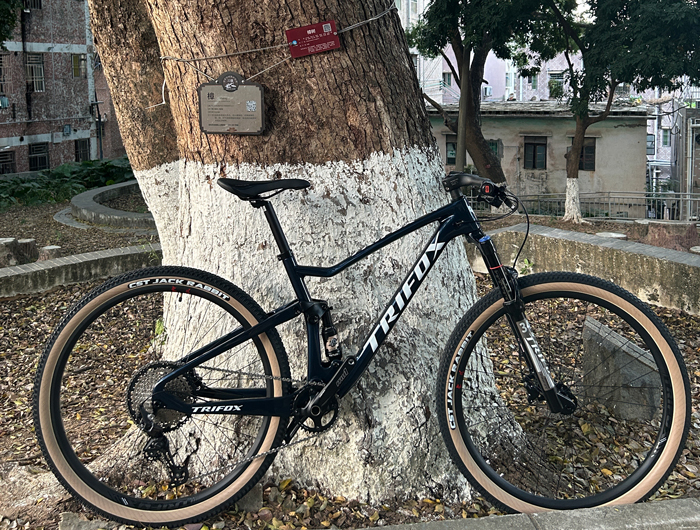
If you're new to mountain biking or just exploring the different types of bikes available, you may have come across the term “suspension bike.” But what exactly does that mean, and how does it affect your riding experience? Whether you're hitting rugged trails, tackling rocky descents, or simply exploring the outdoors, suspension bikes are designed to provide better comfort, control, and performance on rough terrain. In this post, we’ll break down what suspension bikes are, how they work, and why they might be the right choice for you. What Is a Suspension Bike? A suspension bike is a type of bicycle that is equipped with a suspension system to absorb shock and reduce the impact of rough terrain. Unlike traditional rigid bikes, which have a solid frame and fork, suspension bikes feature shock-absorbing components in the front (the fork) and/or the rear (the frame or rear shock). This suspension system helps smooth out bumps, rocks, and other obstacles on the trail, giving riders a more comfortable and controlled experience. There are two main types of suspension bikes: front suspension (also known as hardtail) and full suspension. Let’s explore each type in more detail. Front Suspension (Hardtail) A front suspension bike, or hardtail, has a shock-absorbing fork at the front of the bike but does not have suspension in the rear. The fork is designed to absorb shocks from obstacles like rocks, roots, and bumps, helping to keep your hands and arms from getting jarred. Hardtail bikes are generally lighter, more efficient, and require less maintenance than full-suspension bikes, making them an excellent choice for cross-country riders or those who primarily ride on less technical terrain. Advantages of Front Suspension Bikes: - Lighter weight - More efficient pedaling (especially on smooth trails) - Lower maintenance costs - Ideal for cross-country and less technical riding Disadvantages: - Less control and comfort on very rough or technical terrain compared to full-suspension bikes Full Suspension Full suspension bikes, as the name suggests, have both front and rear suspension systems. The front fork absorbs impacts from the terrain, while the rear shock (or shock absorber) does the same for the rear of the bike. This system is ideal for riders tackling more technical trails, downhill tracks, or rugged mountain routes, as it significantly enhances comfort and control. The rear suspension helps maintain traction, preventing the rear wheel from bouncing off the ground and giving you better control over the bike’s handling. The rear shock in full suspension bikes can be adjusted for different types of terrain, allowing riders to fine-tune the bike’s performance based on their specific needs. Advantages of Full Suspension Bikes: - Better comfort and control on rough terrain - Increased traction and stability, especially on downhill or technical trails - More forgiving ride for beginners or those new to mountain biking Disadvantages: - Heavier than hardtail bikes - Requires more maintenance due to additional components - More expensive compared to front suspension bikes How Does a Suspension Bike Work? Suspension systems use a combination of springs and dampers to absorb and control shock. When the bike encounters a bump, rock, or other obstacles, the suspension compresses to absorb the impact, and then it returns to its original position, thanks to the spring and damper combination. The damper controls the speed of the spring’s return, ensuring a smooth and controlled recovery. This reduces the jarring feeling you would otherwise experience on a rigid bike, improving overall comfort and stability. Key Components of a Suspension System: 1. Fork (Front Suspension): The fork absorbs the shock at the front of the bike and helps keep your hands and arms steady when riding over rough terrain. 2. Rear Shock (Full Suspension): The rear shock absorbs impacts in the rear of the bike, providing additional comfort and traction. 3. Shock Absorbers (Springs and Dampers): These are the core components that control the compression and rebound of the suspension, ensuring that the ride is smooth and stable. Why Choose a Suspension Bike? If you're planning on riding in rough or rocky terrain, or if you want to tackle more technical trails, a suspension bike will make a significant difference in your experience. Suspension bikes are designed to enhance control and comfort, especially on uneven or bumpy surfaces. Here are a few reasons why you might opt for a suspension bike: - Improved Comfort: Suspension systems help reduce the impact of bumps and vibrations, leading to a more comfortable ride. This is especially important for long rides or trails with lots of obstacles. - Better Control: With both front and rear suspension, you get more traction and stability, helping you maintain control when going over rough terrain, steep descents, or obstacles. - Increased Confidence: A suspension bike makes it easier to navigate technical trails without worrying about losing control or hurting yourself from the impact of bumps and drops. - Versatility: Suspension bikes, particularly full-suspension models, are great for a wide range of terrains, from cross-country routes to downhill trails. The Trifox MFM100 Full Suspension Carbon MTB Frame For those looking to invest in a high-performance mountain bike, the [Trifox MFM100 Full Suspension Carbon MTB Frame] is an excellent option. Featuring a lightweight, durable carbon fiber frame and advanced suspension technology, this bike offers enhanced shock absorption, traction, and overall control, making it perfect for mountain biking enthusiasts looking to take on challenging terrains. With its stiff and responsive frame design, the Trifox MFM100 is an ideal choice for riders who want the perfect balance of comfort, performance, and durability. Final Thoughts Whether you opt for a front suspension (hardtail) or full suspension bike, suspension systems are a key feature for riders who want to improve comfort and performance on rough terrain. By absorbing shocks and maintaining traction, suspension bikes make riding on challenging trails smoother and more enjoyable. With options ranging from lightweight hardtails to full-suspension models like the Trifox MFM100, there’s a bike to suit every type of rider and riding style.
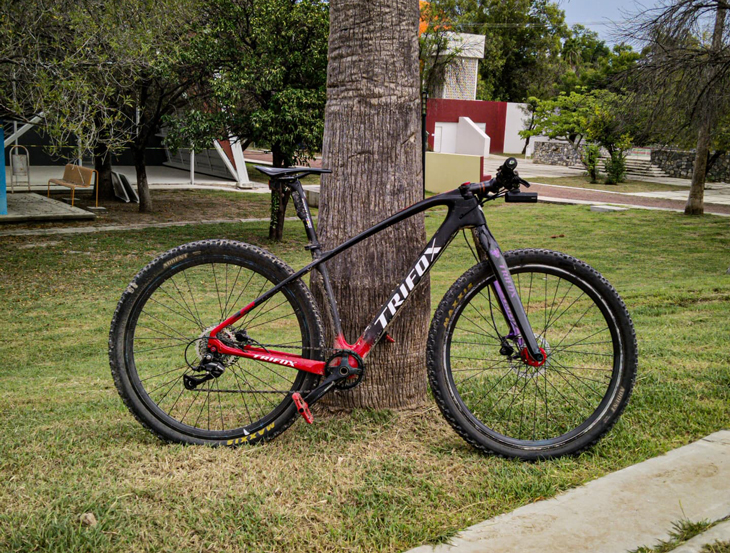
Cycling against the wind can be one of the most challenging—and frustrating—aspects of road biking. Whether you're training for an event, commuting, or just out for a leisurely ride, battling wind resistance requires strategy, technique, and the right mindset. While you can't control the weather, there are several strategies you can use to make riding against the wind more manageable and even enjoyable. Let’s explore the best techniques for tackling headwinds. 1. Lower Your Profile One of the most effective ways to combat wind resistance is by lowering your body profile. The more of your body exposed to the wind, the harder it is to push forward. By adopting a more aerodynamic position, you reduce the surface area that the wind pushes against, allowing you to cut through the wind more efficiently. - Adjust your handlebars: Drop handlebars (common on road bikes) naturally allow for a lower position, but you can further lower your stance by dropping your elbows and getting as close to the bike as possible. - Tuck your elbows: Keep your arms close to your body and avoid flaring them out. This minimizes wind resistance and helps you maintain a more efficient position. - Lower your head: Try not to raise your head too much. Keeping your head low and your eyes on the road will reduce drag and allow you to cut through the wind more effectively. 2. Use Your Gears Wisely Wind can be physically exhausting, especially if it’s a strong headwind. To make things easier, make sure to use your bike’s gears effectively to maintain a steady cadence. You’ll need to shift to an easier gear to keep your legs moving smoothly, avoiding muscle fatigue. - Shift early: Before you start feeling the full force of the wind, shift to an easier gear so that you don’t struggle to maintain your pace. - Maintain a high cadence: Aim for a cadence of around 90-100 RPM (revolutions per minute) to avoid over-exerting your muscles. Pedaling quickly with less force is far more efficient than pedaling slowly with heavy force. 3. Stay Relaxed One of the worst things you can do when cycling against the wind is to tense up. Tensing your muscles will drain your energy much faster, making it harder to sustain your effort. Instead, try to stay relaxed and maintain a steady rhythm. - Relax your upper body: Keep your shoulders, arms, and hands relaxed to avoid unnecessary muscle strain. A stiff body requires more energy to move. - Focus on your breathing: Take deep, controlled breaths to ensure your muscles get enough oxygen and you don’t get fatigued too quickly. 4. Use Drafting to Your Advantage If you're riding with others, drafting is a great way to reduce the amount of wind resistance you face. By riding closely behind another cyclist, you can take advantage of their slipstream, which reduces the drag you experience and makes it easier to maintain speed. - Stay close but safe: The optimal distance for drafting is about 1-2 bike lengths behind the lead rider. Too close and you risk a crash, too far and you lose the benefits of the slipstream. - Switch positions: If you’re riding in a group, make sure to take turns leading so that everyone can share the effort of battling the wind. 5. Pacing and Energy Conservation Riding into a headwind can quickly deplete your energy reserves, so it’s important to pace yourself and conserve energy where possible. If you push too hard early on, you’ll burn out before you reach your destination. - Set a sustainable pace: Find a rhythm that allows you to keep a steady effort without exhausting yourself too quickly. - Take breaks if necessary: Don’t hesitate to take a short break if the wind is particularly strong. Even a few minutes of rest can help you recharge and continue your ride with more energy. 6. Choose the Right Gear When preparing for a ride against the wind, ensure that your bike is suited for the conditions. A road bike with aerodynamic features, such as aero handlebars or a lightweight frame, can help you cut through the wind more efficiently. - Lightweight gear: Choose lightweight clothing that doesn’t create unnecessary drag. Avoid loose or baggy clothing that flaps in the wind and slows you down. - Disc wheels or deep-section rims: If you're racing or riding in very windy conditions, consider investing in a bike with aerodynamic wheels, like those found on high-performance road bikes. These wheels are designed to reduce wind resistance, making it easier to maintain speed against the wind. 7. Hydration and Fuel Battling the wind is physically demanding, so staying hydrated and fueled is essential. Wind can sap your energy faster than you realize, and being properly fueled will help you push through. - Hydrate regularly: Even if you don’t feel thirsty, make sure to drink small amounts of water frequently to keep your energy levels up. - Eat energy-boosting snacks: If you’re going for a long ride, bring along energy bars, gels, or other quick carbohydrates to keep your energy levels high. Final Thoughts Riding against the wind can be tough, but with the right strategies, you can turn it into an opportunity for growth and skill development. By adjusting your riding position, using your gears effectively, staying relaxed, and employing techniques like drafting, you can reduce the impact of the wind and ride more efficiently. And remember, every ride into the wind is a chance to build strength, improve your stamina, and become a better cyclist overall. So next time the wind picks up, use these strategies and turn it into an advantage!
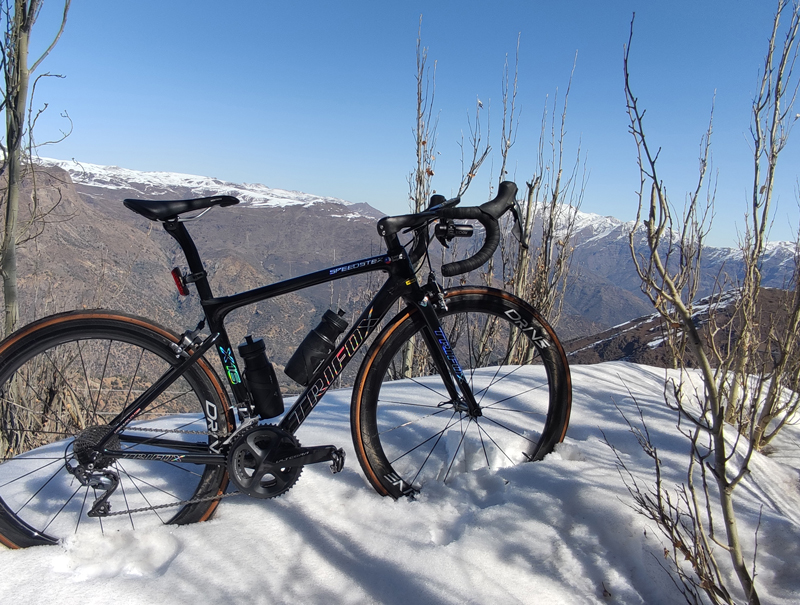
When it comes to modern cycling, one of the most important innovations in bike technology is the disc brake system. Whether you’re cruising through city streets or navigating rugged trails, disc brakes can drastically improve your control, safety, and overall ride quality. But how exactly do bicycle disc brakes enhance your riding experience? Let’s break it down. What Are Disc Brakes? Disc brakes are a type of braking system that utilizes a metal rotor attached to the wheel hub. When you pull the brake lever, brake pads clamp down on the rotor, creating friction to slow down or stop the bike. Unlike traditional rim brakes, which apply pressure to the wheel’s outer rim, disc brakes operate independently of the wheels themselves, offering more precise control over braking performance. Key Benefits of Bicycle Disc Brakes 1. Better Stopping Power One of the most significant advantages of disc brakes is their superior stopping power, especially in challenging conditions. Disc brakes perform better in wet, muddy, or icy environments, where rim brakes might struggle. This is because disc brakes are less affected by moisture or dirt on the wheel rim. Whether you're riding on a rainy day or through a puddle, disc brakes provide consistent braking performance, allowing you to stop quickly and safely. 2. Improved Control and Safety Disc brakes offer more predictable and controlled stopping. Rim brakes can sometimes cause inconsistent braking, particularly when the rim wears down over time or becomes contaminated with dirt. Disc brakes maintain consistent stopping power throughout the life of the brake pads and rotors, even in extreme conditions. This predictable braking action helps prevent accidents and gives you more confidence, especially on descents or during emergency stops. 3. Better Heat Dissipation Another advantage of disc brakes is their ability to dissipate heat more efficiently than rim brakes. During prolonged braking, such as during long downhill rides, friction can cause rim brakes to overheat, leading to brake fade, where the braking power diminishes. Disc brakes, particularly those with ventilated rotors, can absorb and disperse heat more effectively, keeping your braking power strong even after extended use. 4. Longer Brake Pad Lifespan Because disc brakes don’t make contact with the wheel rim, there’s less wear and tear on the wheel itself. This not only helps preserve the integrity of your wheels but also extends the life of your brake pads. In contrast, rim brakes can cause the rim to wear down over time, requiring more frequent replacements of both the rim and brake pads. With disc brakes, you can expect a longer lifespan for your entire braking system. 5. Less Maintenance for Wheels Rim brake systems require more maintenance to keep the wheels in optimal condition. Over time, the rims can become worn, scratched, or bent, which can impact braking performance and the overall health of your bike. Disc brakes, on the other hand, minimize the amount of wear and tear on the wheels themselves. This means you don’t have to worry as much about wheel integrity, especially when you ride on rougher terrain or in wet conditions. 6. More Consistent Performance Across All Conditions One of the biggest perks of disc brakes is their consistency in varying riding conditions. Whether you're riding on flat, dry roads or navigating slippery, downhill trails, disc brakes provide a stable, reliable braking experience. For riders who face changing weather conditions or tackle mixed terrain, the versatility of disc brakes offers significant peace of mind. Why Disc Brakes Are Becoming More Popular While disc brakes were once reserved for mountain bikes, they are increasingly found on road bikes as well. Brands like [Trifox Bike] are incorporating disc brakes into their road bike designs to offer cyclists better safety, improved performance, and greater overall enjoyment. As cyclists demand more reliability, especially for long-distance rides or mixed-terrain experiences, disc brakes are becoming a popular choice across all types of biking. Final Thoughts Bicycle disc brakes are a game-changer for cyclists, offering more control, safety, and performance across all conditions. Whether you're an avid road cyclist looking to take on long, hilly rides or a beginner just getting into cycling, upgrading to a bike with disc brakes can significantly enhance your experience. They provide consistent braking, better heat management, and greater longevity, making them a worthwhile investment for any cyclist looking to improve their ride. With their increasing popularity, disc brakes are the future of cycling, bringing reliability and precision to cyclists of all levels.
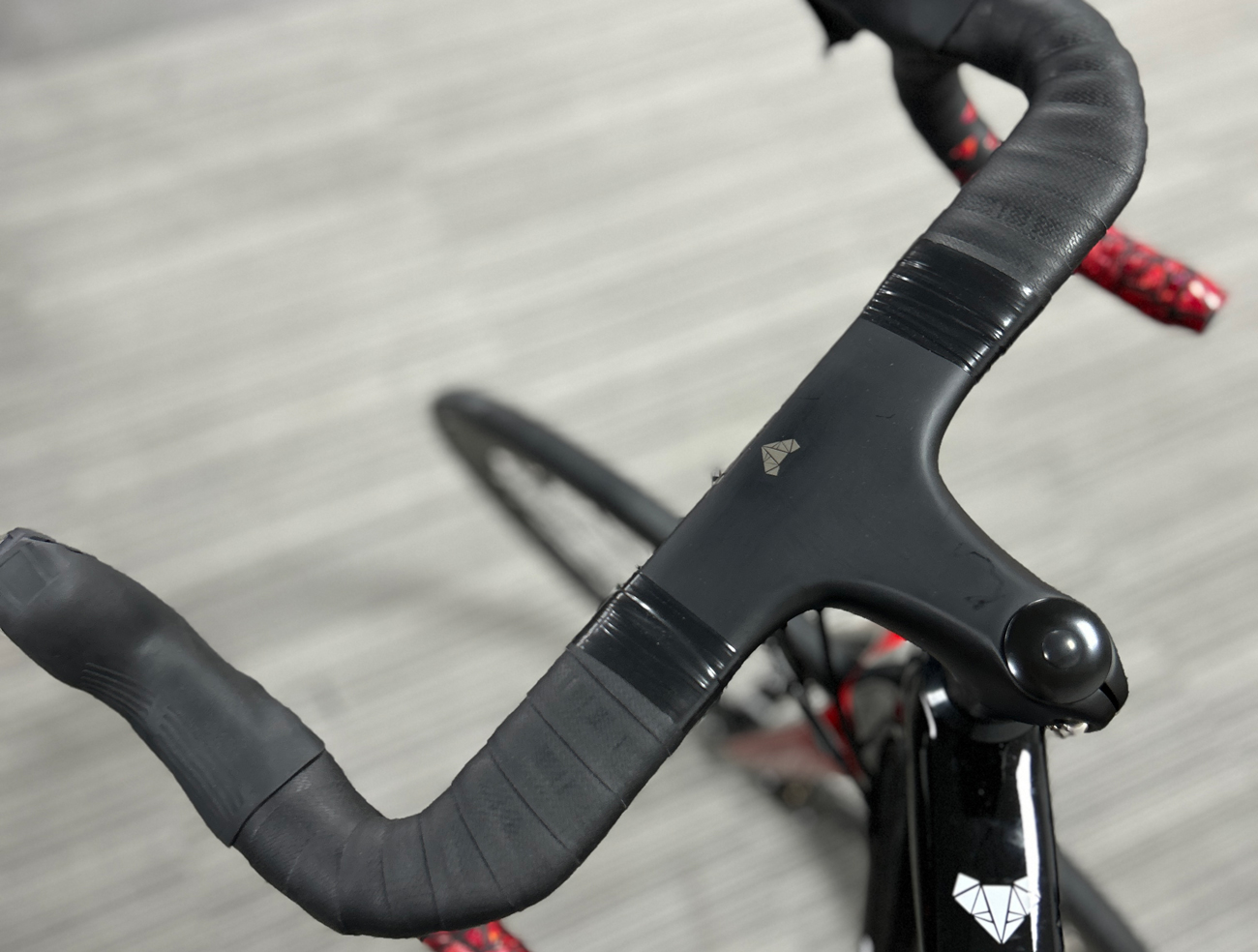
As a road cyclist, it’s natural to wonder how often you need to replace various parts of your bike to ensure optimal performance and safety. One of the key components that often raises questions is the handlebars. They might seem like a simple part of the bike, but they play a crucial role in your control, comfort, and overall riding experience. So, do road bike handlebars need to be replaced regularly? Let’s dive into the factors that influence the lifespan of handlebars and whether regular replacement is necessary. The Role of Handlebars on a Road Bike Road bike handlebars, particularly those with drop bars, are essential for providing control and comfort during long rides. They allow you to switch between different riding positions, reduce wind resistance, and make it easier to maneuver the bike. Handlebars are typically made from materials such as aluminum, carbon fiber, or steel, with carbon fiber offering the lightest weight and the most comfort-absorbing properties. Given their importance, handlebars need to be in good condition to ensure a safe and enjoyable ride. But how often should you replace them? Factors That Impact Handlebar Lifespan 1. Material Durability: The material your handlebars are made from will affect their longevity. Aluminum handlebars are known for their strength and can last many years if properly maintained. Carbon fiber handlebars, like those found in the [Trifox carbon bike handlebars collection], offer superior stiffness and lightness but may have a shorter lifespan if subjected to frequent stress or impacts. They can also be more prone to damage from crashes or mishandling. Steel handlebars, while less common in modern road bikes, are typically very durable but also heavier. 2. Wear and Tear: Over time, handlebars may experience normal wear and tear due to continuous use, especially if you’re an avid cyclist. Constant vibrations, exposure to the elements, and even your own grip can cause the handlebars to wear down. Handlebars can also become slippery or lose their grip if the bar tape or grips get worn out, which is more of a maintenance issue than the handlebars themselves needing to be replaced. This can often be remedied by simply replacing the tape or grips, rather than replacing the entire handlebar. 3. Accidents and Crashes: One of the most common reasons for replacing handlebars is if you’ve been involved in a crash or accident. Even a seemingly minor impact can cause internal damage to carbon fiber handlebars, leading to hidden cracks or weakened areas that could compromise safety. In these cases, it’s important to inspect your handlebars thoroughly or have them checked by a professional. If there’s any sign of damage, it’s essential to replace them to avoid the risk of failure while riding. 4. Changes in Riding Position: Over time, cyclists may adjust their riding positions, whether due to comfort, performance, or riding style. If your handlebars are no longer comfortable or suitable for your riding position, replacing them with a more appropriate set might be necessary. A more aerodynamic or ergonomic setup can significantly enhance your riding experience, reducing strain and fatigue during long rides. How Often Should You Replace Your Handlebars? In general, handlebars don’t need to be replaced regularly unless they show signs of wear, damage, or performance decline. If you ride regularly, you should check your handlebars for any visible cracks, dents, or stress marks, especially after a fall or crash. For cyclists who don’t crash often and take good care of their equipment, handlebars can last many years without needing replacement. However, if you upgrade your bike, change your riding style, or want to reduce weight, it might be time to consider replacing the handlebars. Carbon fiber handlebars, in particular, can offer performance benefits like reduced weight and improved vibration damping, but they do require careful inspection for damage and are more expensive than their aluminum counterparts. Final Thoughts While road bike handlebars don't need to be replaced on a regular basis, they do require occasional inspection and replacement depending on factors like material wear, damage from accidents, or changes in your riding preferences. Regular maintenance, such as replacing bar tape and checking for cracks or stress signs, can help prolong the life of your handlebars and keep you riding safely. If it’s time for an upgrade or a replacement, carbon fiber handlebars, such as those from Trifox Bike, can offer both performance and comfort benefits—just make sure to choose the right type for your riding needs.

If you're new to cycling and thinking about getting into road biking, you might feel overwhelmed by all the options out there. But don't worry—this one-minute guide will help simplify the process and point you in the right direction. Road bikes are designed for speed, efficiency, and long-distance comfort, making them a fantastic choice for both fitness enthusiasts and casual riders. Let's break down the basics. 1. What is a Road Bike? A road bike is a lightweight bicycle built for traveling on paved surfaces. These bikes are designed to be fast and efficient, featuring smooth tires, drop handlebars, and a geometry that places the rider in a forward-leaning position. The main differences between road bikes and other types of bikes—like mountain bikes or hybrid bikes—are the tires, frame design, and the components, which prioritize speed and agility on smooth roads. 2. Key Features to Look for: - Frame Material: Road bike frames are made from materials like aluminum, carbon fiber, or steel. Beginners usually start with aluminum frames, as they are affordable, lightweight, and durable. For those seeking better performance or a smoother ride, carbon fiber frames, such as the ones offered by brands like **Trifox**, are a great option. Carbon bikes are lighter, absorb vibrations better, and offer enhanced stiffness for a faster ride, making them ideal for road racing and long-distance cycling. - Gearing: Road bikes typically come with either a double or compact crankset. The double crankset is great for riders who want to tackle varied terrain, while a compact setup offers more manageable gearing for beginners or those new to cycling. Gearing is crucial because it allows you to adjust the bike's resistance to match different road inclines. - Brakes: Modern road bikes come with two types of braking systems: rim brakes and disc brakes. Rim brakes are the traditional option, offering a more lightweight setup but less stopping power in wet conditions. Disc brakes, which are increasingly common in high-performance road bikes like those from **Trifox**, provide superior stopping power and more consistent braking in all weather conditions. They are a bit heavier but ideal for riders looking for greater reliability. - Tires: Road bike tires are thinner than mountain bike tires, designed for higher pressures to reduce rolling resistance and make the bike faster on smooth pavement. As a beginner, you’ll find that tires in the 25-28mm width are ideal for a balance of comfort and speed. 3. Why Choose a Road Bike? For beginners, road bikes are perfect if your goal is to get into cycling for fitness or long-distance rides. Road bikes are fast and efficient, and you'll find yourself able to cover longer distances with less effort compared to other types of bikes. Whether you're aiming to get fit, participate in group rides, or take part in charity events, a road bike will be your best companion. 4. Things to Consider Before You Buy: - Fit: It’s essential that the bike fits you properly. A bike that is too big or small can lead to discomfort or even injury. Many bike shops offer fitting services, which is worth taking advantage of. - Budget: Prices for road bikes vary greatly, so decide how much you're willing to spend. Beginner road bikes can start at around $500, while high-performance models with advanced features and carbon frames can exceed $2,000. - Purpose: Think about how often you plan to ride and the terrain you'll be cycling on. If you're mostly riding on smooth roads, a standard road bike will suffice. If you want to explore gravel paths or take part in races, you may want to consider specialized bikes like gravel bikes or triathlon-specific models. 5. Final Thoughts: A road bike is a great investment for anyone interested in cycling, whether you're starting out for fun or aiming for more serious competition. With the right fit and the right gear, you'll quickly enjoy the speed, comfort, and freedom road bikes offer. And if you're looking for quality, brands like **Trifox** offer premium carbon road bike frames designed for optimal performance—perfect for beginners looking to take their cycling to the next level.
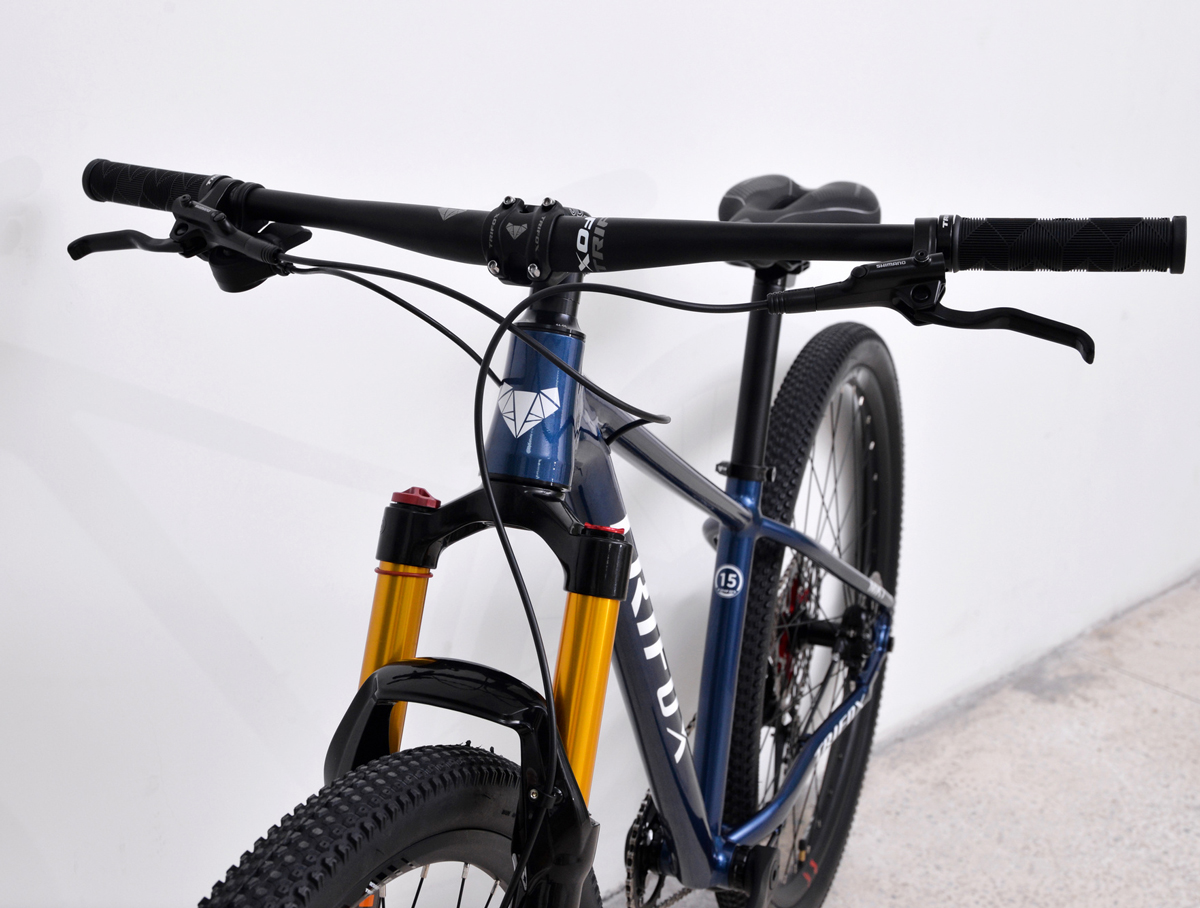
When it comes to mountain biking, having the right bike for the terrain is essential for both performance and enjoyment. Among the many choices available, the PeakTrail Xtreme MK7 Aluminum Mountain Bike stands out as a top contender for trail enthusiasts. This bike, designed for rugged terrain and built to withstand the toughest trails, offers a combination of lightweight durability, smooth handling, and advanced features that set it apart from other trail bikes. 1. Lightweight Yet Durable Aluminum Frame One of the standout features of the PeakTrail Xtreme is its aluminum frame, which strikes the perfect balance between strength and weight. While many high-performance mountain bikes use heavier steel or more expensive carbon fiber frames, the aluminum frame of the PeakTrail Xtreme MK7 offers exceptional durability without adding unnecessary weight. This makes it easier to tackle steep climbs and challenging terrains without being weighed down. The aluminum construction also means the bike is highly resistant to corrosion, ensuring that it can handle the elements and continue to perform season after season, whether you’re riding through muddy trails, wet conditions, or rocky surfaces. For riders looking for a bike that delivers both power and agility, the PeakTrail Xtreme’s lightweight design allows for faster acceleration and greater maneuverability, giving you a competitive edge on technical sections and tight corners. 2. Advanced Suspension for Smooth Rides Mountain biking often involves tackling rough, uneven trails, and the PeakTrail Xtreme is equipped with an advanced suspension system that absorbs shocks and provides a smoother, more comfortable ride. With a front suspension fork designed to cushion impacts from bumps, rocks, and roots, the bike is optimized for trail riding. This suspension system is particularly beneficial when you encounter rocky or root-heavy trails, as it absorbs the vibrations and helps you maintain control. While many trail bikes may only have basic suspension systems, the PeakTrail Xtreme ensures that every ride, whether uphill or downhill, remains comfortable and controlled, even on challenging terrain. This is essential for maintaining stability and confidence while riding through technical sections, making it easier to focus on your performance rather than worrying about discomfort or lack of control. 3. Superior Handling and Control Control is paramount for mountain bikers, and the PeakTrail Xtreme MK7 excels in this area. The geometry of the bike is specifically designed to offer superior handling, allowing riders to navigate tight turns, rough descents, and uneven terrain with ease. The bike’s geometry provides a stable and responsive ride, enabling better control during technical descents and tight corners. The wide tires on the PeakTrail Xtreme further enhance grip, improving traction on slippery or rocky trails. This allows for better control when navigating steep slopes or loose gravel, so you can confidently take on obstacles without worrying about losing grip or stability. Whether you’re riding through switchbacks or descending from a mountain trail, the PeakTrail Xtreme provides the level of control that ensures you’re always in charge, regardless of the conditions. 4. Versatile Components for a Range of Terrains The PeakTrail Xtreme is designed to handle a wide range of terrains, from smooth, fast-flowing trails to rugged, technical tracks. The bike is equipped with high-quality components that improve performance across different terrains. This includes an efficient gear system that allows for smooth shifting, helping you power through climbs and keep up speed on flat sections. Additionally, the strong, reliable brakes give riders confidence on downhill runs, ensuring you can stop quickly and safely when navigating tricky sections. The combination of components ensures that the PeakTrail Xtreme is versatile enough for different riders, from beginners to more experienced bikers, and can be trusted in various riding conditions. 5. Durability for Long-Term Use Mountain biking can be demanding on both the rider and the bike, but the PeakTrail Xtreme MK7 is built to endure. Thanks to its durable aluminum frame and rugged components, this bike can handle frequent use, from aggressive trail riding to weekend adventures. The reinforced parts are designed to stand up to the harsh conditions of off-road cycling, including mud, dirt, water, and rocks. For serious mountain bikers, durability is key—no one wants to invest in a bike that will break down after a few rides. The PeakTrail Xtreme provides long-term performance, allowing riders to take on challenging trails without worrying abohigh-performance trail bikes come with a steep price tag, the PeakTrail Xtreme MK7 offers exceptional value for money. By using aluminum for the frame and combining it with reliable suspension and components, this bike delivers solid performance without breaking the bank. For riders who want a durable, high-performing bike without paying for top-tier carbon frames or overly expensive designs, the PeakTrail Xtreme offers an excellent balance of quality and affordability The PeakTrail Xtreme MK7 Aluminum Mountain Bike is a standout choice for anyone looking to take their trail riding to the next level. Its lightweight yet durable aluminum frame, advanced suspension system, superior handling, and reliable components make it a top contender in the mountain biking world. Whether you’re a beginner looking for a versatile bike to tackle different trails or an experienced rider who demands control and performance, the PeakTrail Xtreme offers the perfect combination of durability, speed, and comfort to make every ride an adventure. 文字

















